| Day 1 Beijing ( ) |
| Our English speaking tour guide will meet you at the Beijing airport on time, transfer to the hotel in Beijing downtown. Relax the rest of the day. If you arrive in the early afternoon, recommend you to visit Dashilan old street by yourself. |
| Dashilan old street | Dashilan is the oldest and perhaps one of Beijing’s most fascinating streets to explore. This district is cluttered South of Tian'anmen Square, it is the civilian area, known as the grassroots culture under the Forbidden City. |
|
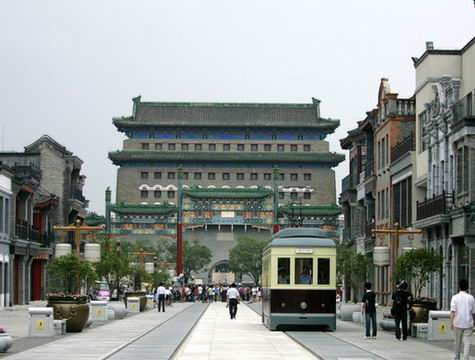 |
| [ Optional ] Lao She Tea House: Lao She Tea House is one of Beijing's most famous tea house, and has been visited by a number of well-known politicians. It is a wonderful entertainment house with short shows by comedians, singers, musicians, acrobats and opera performers. |
|
| Day 2 Beijing ( B,L ) |
| Full day highlight tour visit to explore Forbidden City, Panda House and Liulichang Street of Chinese Culture, a place for people interested in Chinese calligraphy, painting or other artwork. |
| Beijing Zoo | The must-see area of Beijing Zoo is the famous Panda House, You can see lovely Giant Panda and lesser panda. Lakes and gardens abound in the zoo complex which is a weekend destination for families. | | Tian An Men Square | As the largest city plaza in the world, it is of great cultural significance for its seeing of several key events in Chinese history. Today here are always sightseers and kite-flyers. Most visit at dawn or dusk to see the flag raising and lowering conducted by the PLA. | | Liulichang Culture Street | Liulichang is known throughout China and the world for its ancient books, calligraphy, paintings, rubbings, ink stones and ink. The street is a bustling commercial district southwest of Tiananmen square that caters mainly to foreign tourists. | | Forbidden City | For almost 500 years, the Forbidden City served as the home of 24 Emperors and their households, and the ceremonial and political center of the Chinese imperial government. It was listed by UNESCO as a World Cultural Heritage Site in 1987. |
|
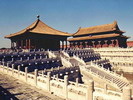 |
| [ Optional ] Peking Opera: With a history of 160 years, Peking Opera, extolled as “Oriental Opera”, is representative of all operas in China. Full of Chinese cultural traditions and tidbits, the opera presents the audience with touching stories, beautiful paintings, exquisite costumes, graceful gestures and martial arts. |
|
| Day 3 Beijing ( B,L ) |
| The highlight today is the Great Wall. The Mutianyu Great Wall is less crowded than Badaling, you might walk up and down the Wall on foot, or take cable car one way or round trips. The extra cost of cable car (RMB 50 one way) will be at your own cost. |
| Sacred Way | It was originally built to lead to Changling Tomb as a symbol of the passed emperor’s journey to heaven in their afterlife. Alongside the Sacred Road are 12 pairs of animal marble figures such as lions, elephants and 6 pairs human marbles such as generals and public officials. | | Ming Tombs (Changling) | Changling Tomb is the largest and the most well-preserved one of the 13 Ming Tombs. Emperor Zhu Di, the third emperor of Ming Dynasty, and his Empress are co-buried in this grave. The 32 giant pillars in the Ling’en Hall, Changling’s main building, remain as solid as before after over 500 years. | | Mutianyu Great Wall | Mutianyu Great Wall seems to be not popular as section at Badaling, but it doesn’t get as crowded, which assist you in appreciating the magnificent scenery easily. Woods cover over 96% of the total scenic area, and its 2.5 kilometer stretch allows you a walk with striking landscape and fresh air. |
|
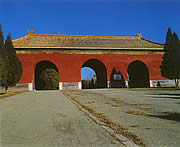 |
| [ Optional ] Kungfu show: The splendid Kung Fu show, running daily in Red Theater of Beijing shows you an authentic Kung Fu on the spot, which combining story-telling, acrobatics to celebrate the philosophy and skill of martial airs. You enjoy the opportunity to contact performers directly after the show or to learn Kung Fu from them! |
|
| Day 4 Beijing ( B,L ) |
| Indepth tour of exploring traditional culture of Beijing. |
| Lama Temple | The Lama Temple, northeast of downtown Beijing, is the most famous Tibetan Buddhist temple outside of Tibet and was visited by past Dalai and Panchen Lamas (as well as one current-day Chinese-appointed Panchen Lama). | | Temple of Confucius | The Temple of Confucius at Beijing is the second largest Confucian Temple in China after the one in Confucius' hometown of Qufu. The complex includes four courtyards aligned along a central axis. | | Hutong Tour by Rickshaw | Hutongs are small alleyways where people live together in communities of homes packed into a small area,just like a museum of Beijing's folk customs. Exploring Hutongs by rickshaw can find the residents playing Chinese chess, Mahjong,etc. |
|
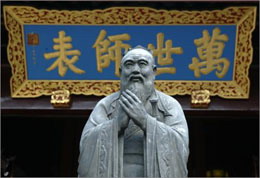 |
| [ Optional ] National Grand Theater: National Grand Theatre is colloquially described as The Egg, is an opera house in Beijing. Its location immediately to the west of Tiananmen Square, near the Forbidden City, combined with the theatre's futuristic design, created considerable controversy. |
|
| Day 5 Beijing ( B,L ) |
| After half day sightseeings in Beijing city, the rest of the day is at your leisure for your freet time shopping and relex. |
| Temple of Heaven | It was the place where the Emperor of the Ming and Qing dynasties would worship heaven and pray for good harvests. Built first in 1420, the Temple of Heaven is a precious example of China 's ancient architectural art and the largest design for worshipping heaven in the world. | | Summer Palace | The Summer Palace deserves your visit to her exquisite buildings, long corridor, and beautiful bridges. Her shoreline pathway makes an excellent run or walk for you. It was a luxurious imperial garden for royal families to rest and entertain in Chinese Qing Dynasty. | | Olympic Stadium (Bird Nest) | The National Stadium, also named the “Bird’s Nest” due to its iconic design was the key competition venue of the Beijing 2008 Olympic Games. The stadium looks like a nest from the outside, symbolizing a cradle holding the hopes of mankind for the future. |
|
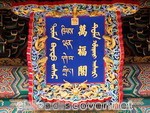 |
| [ Optional ] Olympic Stadium (Bird Nest): The National Stadium, also named the “Bird’s Nest” due to its iconic design was the key competition venue of the Beijing 2008 Olympic Games. The stadium looks like a nest from the outside, symbolizing a cradle holding the hopes of mankind for the future. |
|